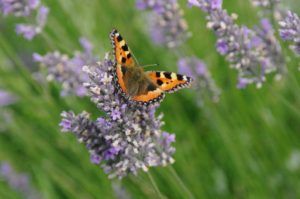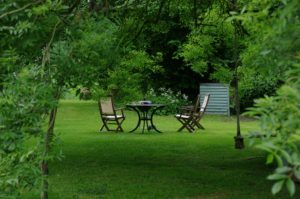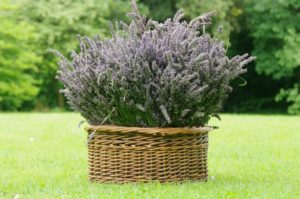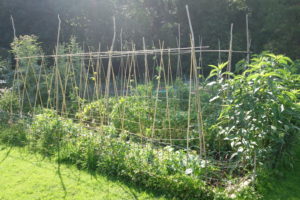Lavender Distillation Day
We held a day in the garden at the Mill, to learn about how to distill the scent of lavender and capture it in a bottle. Lavender is one of my favourite perfumes. Renowned for its calming, relaxing properties, I love filling my bedroom with the scent of it at bedtime by burning oils, or spraying lavender water on my pillow. Jo Malone’s Lavender and Amber perfume is one of my every-day staples – clean but sophisticated, and light enough to wear for early morning starts without being heavy or cloying. It’s a scent (and flavour) that I strongly associate with the Mill. The old tennis court is lined with rows and rows of lavender plants, which attract hundreds of bees in the summer to fill the air with the sound of their buzzing.
We’ve harvested and dried the lavender at the Mill for years. Mum and her friends sometimes weave it into posies to put with in their wardrobes or drawers, to help keep the moths at bay. Emily, who works with Debbie on the gardening team, likes spraying lavender water and then walking into the mist, for a light dusting of the scent. A plant that forms the basis of hundreds of natural beauty products, and is reputed to possess some anti-inflammatory characteristics, we wanted to learn more about what you can make with it. On the 24th September, we held a workshop in our kitchen to learn how to make lavender water and lavender oil with Jonathan Code (author, and lecturer with Crossfields Institute International). The intention behind the workshop was to explore a little of these ancient alchemical processes, and get to know lavender better through an exploration of its scent.


Emily harvested the lavender according to biodynamic principles earlier in August this year, in preparation for the workshop. We’ve got what is called a copper alembic at the Mill (new terminology for me!), which is used to heat up water with the stripped, dried lavender blossoms in it. The alembic is an alchemical still, which is the equipment used to distill the lavender into hydro sol (the lavender water) and the lavender oil. It is more rudimentary than a modern alcoholic still. At this workshop, we didn’t purify the oil, meaning it has some grassy, earthy notes to it. It was a very hands-on day, the purpose of which was for Jonathan to show everyone how you can take the skills away and do it yourself at home. He uses a pressure cooker instead of a copper alembic, so you don’t need to have fancy equipment to be able to do it yourself.
Everyone left with a bottle of lavender oil to take away, and the knowledge of how to distill the plant to extract the essential oil. Keep your eyes out for details of more courses on our website if this is of interest to you – the little bottles of scent make lovely gifts for family and friends.


